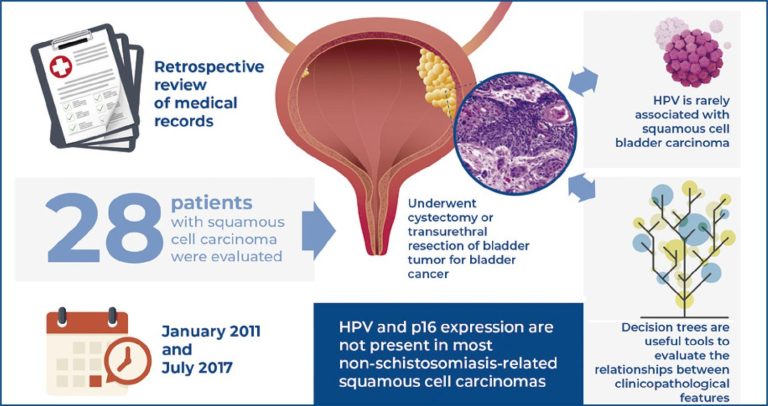13/Oct/2025
HPV-independent vulvar squamous cell carcinoma: a case report and review of the literature
DOI: 10.31744/einstein_journal/2025RC1482
ABSTRACT Vulvar cancer, a rare gynecological malignancy, accounts for 3-5% of cases and is most commonly squamous cell carcinoma. Prognosis is poorer in cancers unrelated to human papillomavirus (HPV), often associated with chronic inflammation. We report the case of a 42-year-old woman from São Paulo, Brazil, who presented with a vulvar lesion initially misdiagnosed as an ingrown hair. Despite treatment, the lesion progressed, and subsequent evaluation revealed invasive squamous cell carcinoma. Biopsy confirmed HPV-independent disease, with immunohistochemistry demonstrating aberrant p53 […]
Keywords: Female genital neoplasms; Oncologic surgery; Papillomavirus infections; Squamous cell carcinoma; Vulvar neoplasms
Association of human papillomavirus (HPV), p16, p53 and p63 expression with non-bilharzia-associated squamous cell carcinoma of the bladder and algorithm construction for histopathological grading prediction

19/Apr/2023
Association of human papillomavirus (HPV), p16, p53 and p63 expression with non-bilharzia-associated squamous cell carcinoma of the bladder and algorithm construction for histopathological grading prediction
einstein (São Paulo). 19/Apr/2023;21:eAO0109.
View Article19/Apr/2023
Association of human papillomavirus (HPV), p16, p53 and p63 expression with non-bilharzia-associated squamous cell carcinoma of the bladder and algorithm construction for histopathological grading prediction
DOI: 10.31744/einstein_journal/2023AO0109
Highlights Twenty-eight cases of bladder squamous cell carcinoma cases were evaluated for p16, p53, p63 immunohistochemistry, and HPV PCR. Neither direct HPV detection nor its indirect marker (p16) was identified in most cases. Decision trees constructed described the relationships of a variety of clinicopathological features with high classification accuracy. ABSTRACT Objective To investigate the expression of human papillomavirus (HPV), p16, p53, and p63 in non-schistosomiasis-related squamous cell carcinoma of the bladder and to develop an accurate and automated tool […]
Keywords: Algorithms; Carcinoma, squamous cell; Human papillomavirus 16; Human papillomavirus 63; Human papillomavirus type 53; Machine learning; Papillomaviridae; Papillomavirus infections; Urinary bladder neoplasms
01/Jan/2014
Prevalence of sexually transmitted diseases in female athletes in São Paulo, Brazil
DOI: 10.1590/S1679-45082014AO2949
Objective : To determine the prevalence of sexually transmitted diseases in female athletes. Methods : An observational, cross-sectional study was conducted including 50 female athletes with mean age of 20±3 years. Colposcopy, pap smear, and polymerase chain reaction for Chlamydia trachomatis, human papillomavirus and Neisseria gonorrhoeae were performed. Blood samples were collected to test for the human immunodeficiency virus, syphilis, hepatitis B and C. The athletes presenting clinical diseases or conditions identifiable by laboratory tests were treated and followed up […]
Keywords: Papillomavirus infections; Real-time polymerase chain reaction; Sexually transmitted diseases; Sports medicine; Vaginal smears


